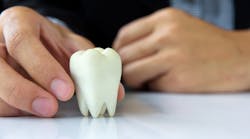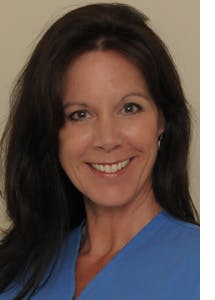By Kimberly Herrmann, RDH
October 21, 2013
All of our experiences in life become a part of who we are. Taken separately, they may not be that impressive – but collectively, they will mold you into the person you become. You and all of your classmates, it appears, share the same school experiences. However, you will put a unique perspective on those experiences because of who you are.
So you passed the boards and got a job as a dental hygienist. Now what?
I want to share with you an experience I had while in dental hygiene school that has had a lasting impact on me to this day professionally. It’s interesting that when we are in the moment of learning something, we may not see the value of it. It’s not until later, sometimes much later, that we recognize the significance of seemingly mundane tasks or events.
When I was in my junior year of dental hygiene school, we had to carve teeth out of a block of wax. Some of you may still be required to do this. We were given exact measurements the replicated tooth should be, and pictures in a book to go by. We carved upper molars, lower molars, central incisors, cuspids, premolars, and lateral incisors. Those days spent in the lab were laid back and fun, but little did I know then what a priceless exercise this was for me. Daily, in my current dental hygiene duties, I am scaling a patient’s teeth, with moderate subgingival calculus, moderate bleeding, and a short amount of time to do my job. I always remember those teeth I carved, the intricacies of each tooth’s anatomy, the curves of the furcations and the line angles. I can visualize what I’m not able to see, and therefore I’m able to be effective at removing the calculus.
Hygienists strongly believe there are too many hygiene schools, too few jobs
I know your dental hygiene instructors have all sorts of ways of teaching you dental anatomy and calculus removal. I urge you to use all of the resources you are exposed to: extracted teeth, models of teeth with calculus, and carved teeth. Use these different models of teeth to get intimately familiar with the shapes, sizes, curves, and hiding places that you will be removing calculus from. Keep practicing over and over, using your different instruments on all of the surfaces, so that you can get a feel for the tooth’s morphology. When you start practicing in the clinical world, a lot of the calculus removal you do will be by feel, not by direct vision – but using direct vision on models and extracted teeth as you learn will give you a very solid foundation for building your clinical skills and speed.
By getting proficient with tooth morphology and your ability to remove calculus from all possible surfaces, you are preparing yourself to excel at your regional boards as well. I’ve been grading board students for about seven years now. It is so heartbreaking for me when I see students leaving calculus. It’s usually on the mesials and distals of molars and/or premolars, and it’s usually interproximal. Use your time in school to really study those teeth and figure out what it takes to access the calculus that is there. If it’s a skinny, tight space, you may need a skinny instrument. A big, thick, new Gracey 11/12 may not fit in a skinny mesial of #19 space. And the same goes for your power scalers. Practice on models and extracted teeth so that you know exactly how to adapt your instruments to reach those hiding spots, and exactly which instruments will work in each scenario.
I like this quote from Brazilian author Paulo Coelho: “People never learn anything by being told. They have to find out for themselves.” That is so true! Experience is knowledge applied. And ours is a profession of skill and dexterity that must be repetitiously practiced to perfection. Appreciate all of your school experiences, and be proactive about becoming the clinical asset you know you can be!
Kimberly Herrmann, RDH, has been a practicing dental hygiene clinician for 27 years. She is a past alternate delegate to the ADHA, past president of the Mississippi DHA, and past president-elect of Southern Nevada Dental Hygienists’ Association. She currently serves as an examiner with CITA and is a member of the National Association of Professional Women. You can find more hygiene advice from Kimberly in her new book, Becoming a Clinical Asset, written to inspire new hygienists, outline real solutions to everyday challenges, and provide support along the way.








